

WHAT MAKES THE DIFFERENCE
It’s generally agreed that Selmer Paris has
made great saxophones and one of the
most popular model
is without doubt the Mark VI.
THE MATERIAL
The material makes an very important role in
the sound produced.
Saxophones are primarily
made from brass.
Brass is a composite alloy made up of metals including
copper, tin, nickel, and zinc.
The most common type used for instruments is yellow brass
which contains 70% copper and 30% zinc.
Other types include gold brass and silver brass which have
different ratios. The zinc in brass makes the alloy
workable at lower temperatures.
Some custom manufacturers use special blends of brass,
silver and copper for different saxophone parts.
Silver is
a precious metal that imparts a particular sweetness and a
velvety charactrer to the sound and removes the edge that
brass instruments can have.
Dependent
of the material and alloy in a saxophone it can have a
strong fundamental tone and sound warm, dark
and sultry but also on the other hand brighter
and edgy, thin and even annoying. Student horns sound like
"thin" because they are, typically, thinly constructed of
lightweight and inexpensive metals.
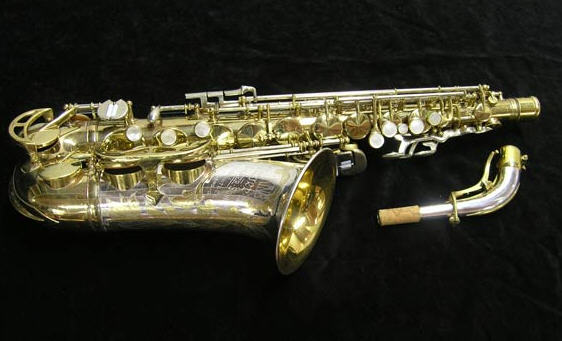
King Super 20 Silversonic alto
with solid silver bell- and neck
THE BORE
Vintage saxophones have normally a larger bore so the sound is broader, a little darker and warmer. A new modern saxophone has smaller bore and therefore a little brighter sound also described as a thinner sound.
THE MATERIAL THICKNESS- AND SAXOPHONE WEIGHT
In order
to compare material thichness between older vintage
saxophones and newer models we need to pick two refernce
saxophones and has selected Selmer Mark VI tenor from 1965
and Martin Handcraft Gold Plate Phase II tenor from
1926.
Several
measures taken shows that Martin in general has 0,9mm body
material thickness while Selmer Mark VI has 0,7mm.
Thickness of the material plays also an important role of how the saxophones sound.
Modern
saxophones are therefore slightly lighter than a vintage saxophone.
THE MATERIAL FINISH
To protect
the a saxophone's body and parts from oxidation and
tarnishing, a surface finish is applied.
The finish can be a spray applied lacquer or an
electroplated metal.
Lacquers (Clear,
Matte, Honey Gold, Rose Gold, Black, Antique Matte) tend to
damp a little of the very high harmonic content in the
sound.
This gives lacquered instruments a slightly warmer sound
when compared to identical plated instruments.
The color of the lacquer has no influence, only the amount
of lacquer applied.
All saxophones
of the same geometry, material and pads
with
the
same amount of lacquer will sound identical.
Black lacquered models are lacquered with several coats of
black lacquer, engraved and then clear lacquered again.
The additional coats of lacquer normally makes these models
sounding
more muted
than other like lacquered models.
Gold, Silver-Plated, nickle or bare brass saxophones tend to
play a little brighter and with a little more power for the
same effort due to the absence of a lacquer coating.
Silver-plated instruments will tarnish and can be kept new
looking for a lifetime with a few tricks we recommend
Gold-plated saxophones will not tarnish.
Vintage saxophones particular form the 20's and
30's are often in the execution of silver plate, gold plate,
nickle plate or bare brass.
HANDCRAFT
Vintage saxophones are from a different time,
back when saxophones were made with pride and care, often
totally handmade (handcraft) with care and skill.
Back in the time when the focus was on making the best
product and not like today
where cost cutting and saving time in production have more
and more focus.
TONE HOLES
Vintage saxophones are made
with toneholes either, straight like on contemporary/ newer
saxophones,
bevelled and soldered on or rolled toneholes.
It's generally agreed that the toneholes also plays a very
important role of how the saxophone sound.
Straight tone hole (Selmer Mark
VI)
Rolled tone hole (Conn C melody)
Bevelled tone hole (Martin
Handcraft Phase III)
Bevelled tone hole (soldered off
body)
KEYWORK ACTION
Keywork action is normally defined as
description of how long way the keys has to move
from their rest postion until the pads reaches tone holes.
A saxophone with fast / good action is a saxophone where the
keys have limited
distance to move from rest postion to the point when their
respective pads reaches the tone holes.
It's considered to be easier to play fast and precise on a
saxophone with good action.
However, the key heights should be set for
the saxophone to play in tune with a full and responsive
tone
and in general as low as possible but not so low that the
sound get's stuffy and/ or the intonation poor.
In general, the key action on the upper- and lower
stacks is very much the same on vintage saxophones compared
to newer saxophones because both have to deal with the same
principle for setting key heights mentioned above.
The conclusion of this is that the only
difference worth mentioning between vintage saxophones and
newer
saxophones is the aciton on the left hand pinky
cluster. Due du the construciton of the pinky clusters,
there are not much you can do to change the action on these.
Action measurements on
the pinky cluster between
Martin Handcraft Phase II
from 1926
and Selmer Mark VI shown on the two pictures
below.
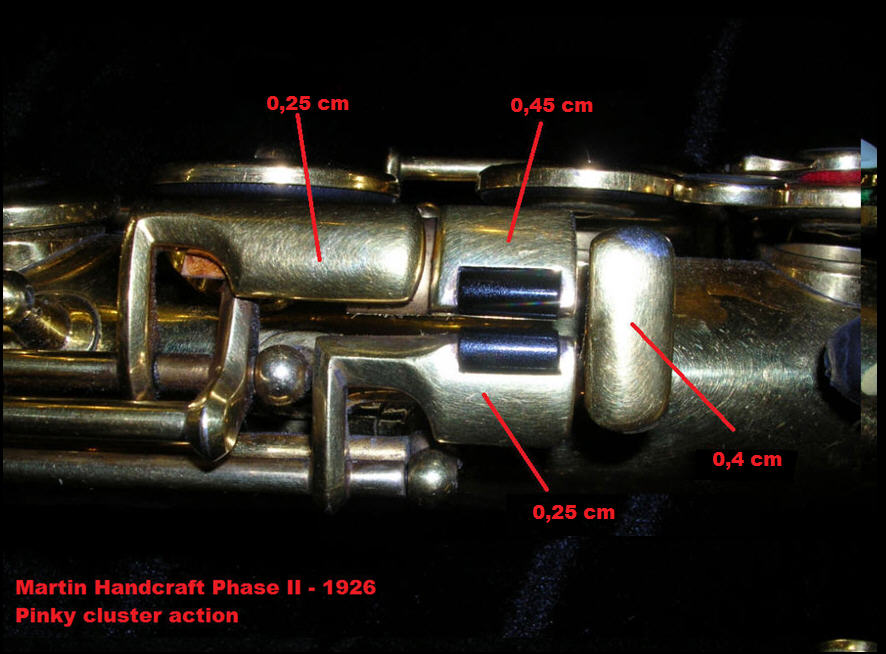
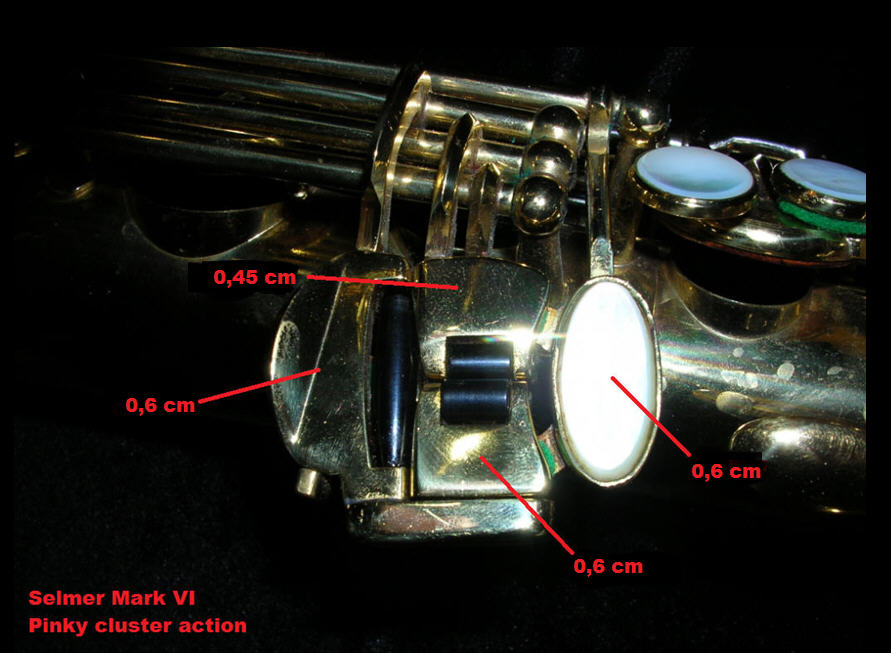
ERGONOMICS
Ergonomics is defined as
how natural and pleasant it feels to play the saxophone.
How the saxophone fits in the hands and how easy it feels to
play it.
Different saxophones have different keywork design, but the
main difference is in fact only
on the left hand pinky cluster. All other keys are more- or
less the same with minor modifications.
The left hand pinky cluster is
pictured above in the section of ACTION and it's quite obvious
that
the difference between Selmer Mark VI and Martin Handcrat
Phase II is easy to see.
But in order to make up any opinion
about ergonomics, you have to play a saxophone for quite some
time,
because
everyone
will normally prefer the ergonomics of the saxophone they
are used with !
Ergonomics can be if you feel that
the action is good, it could be if you feel that it's best
with
convex mother of pearls instead of concave. It could be if you
feel that the weight balance of the
saxophone is good when it's hanging in the neck strap and it
can be if you feel that some keys
are too close- or too far away from your fingers.
So the ergonimics is very much a
matter of what you are used with and what suits your hands.
For some players with shorter
fingers than average, the Selmer Mark VI left hand thumb rest
may feel quite bad because the big flat left hand thumb rest
don't leave it up to the player to
decide what position that's best for his- or hers left hand
thumb.
So ergonomics is
something saxophone manucaturers have had in mind all from the
early years.
Some are good solutions and some not so good.
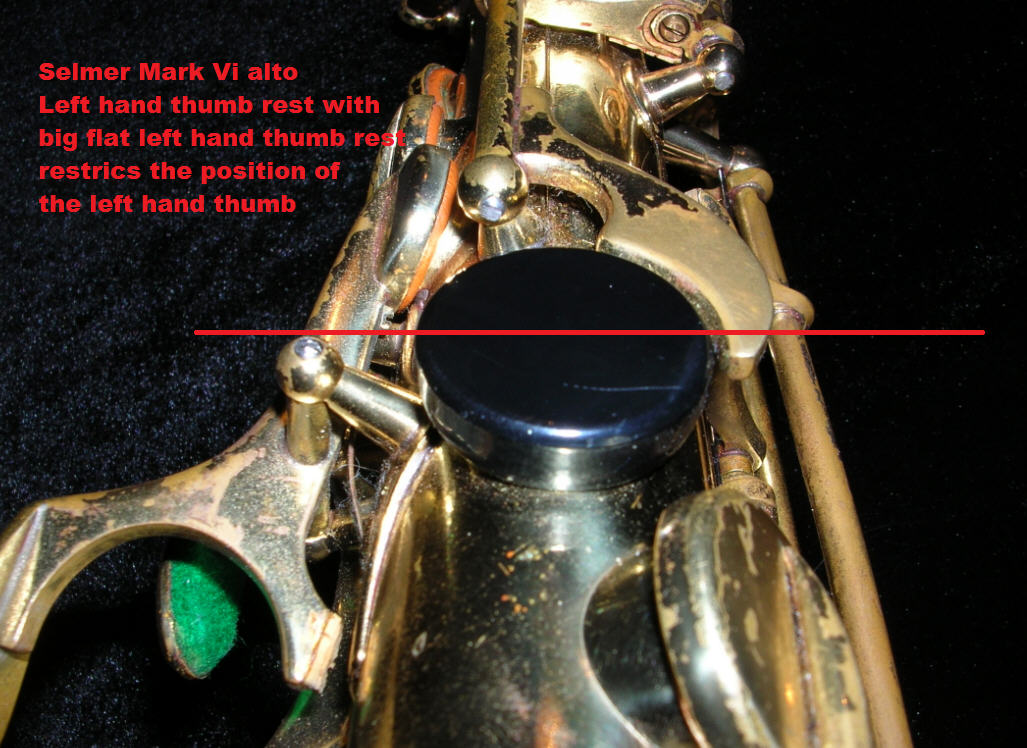
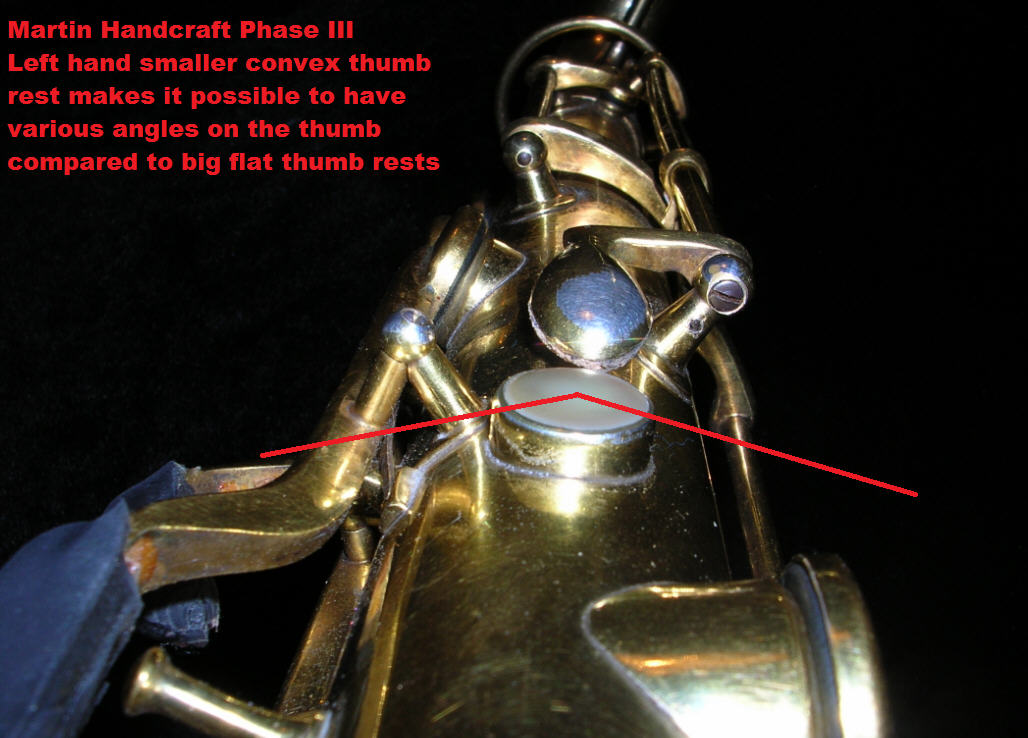
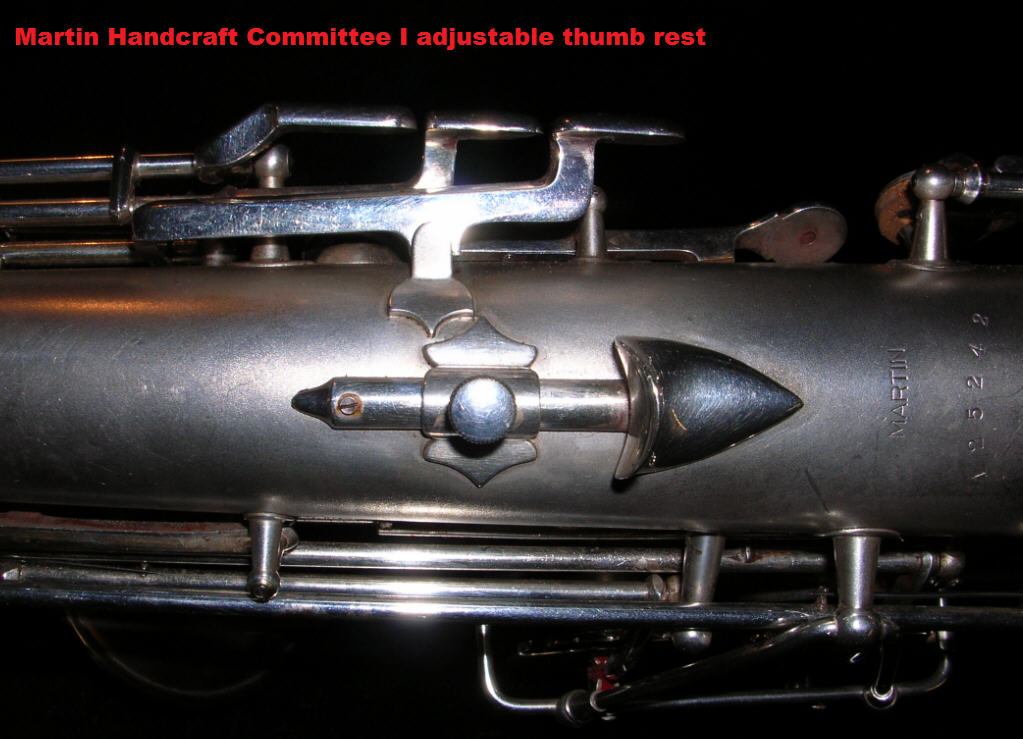
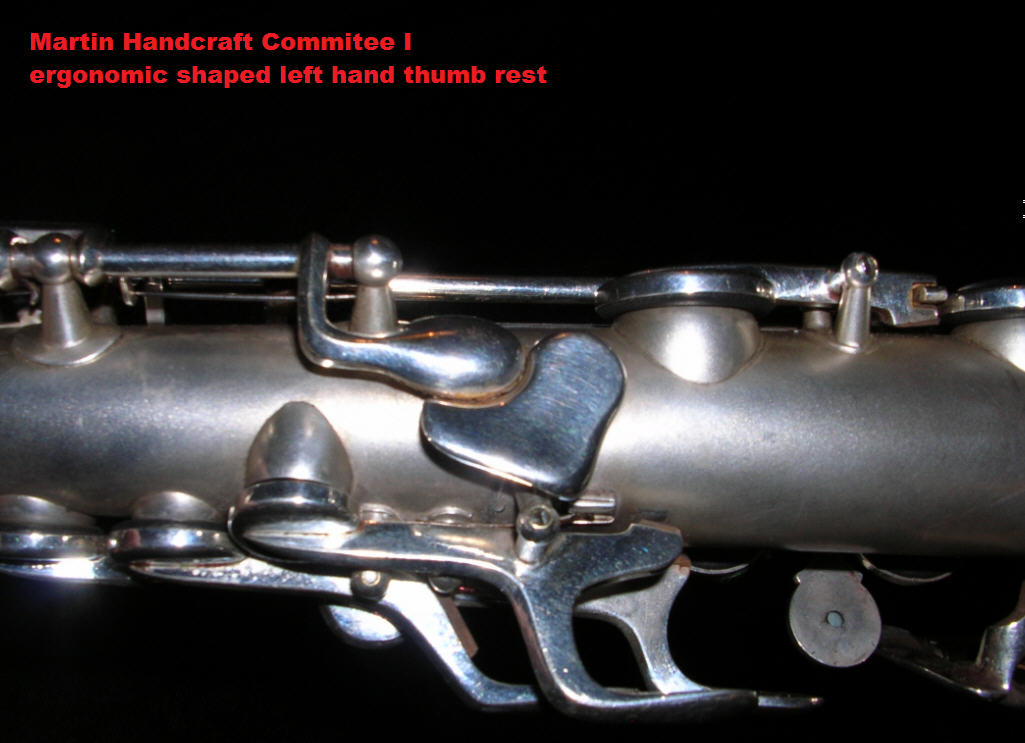
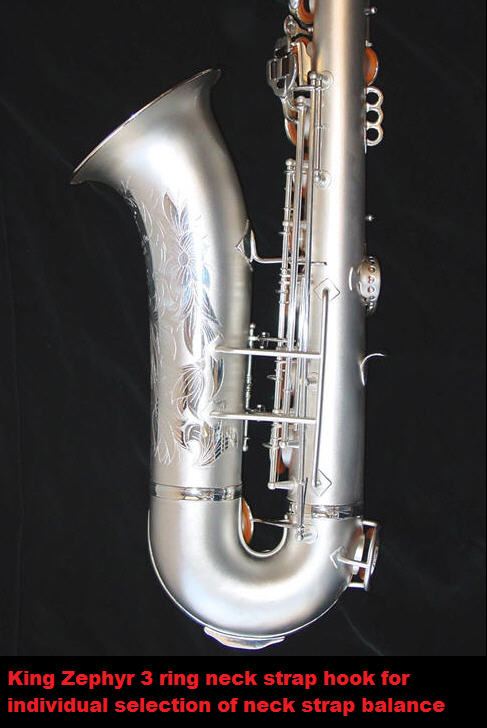
In order to
improve ergonomics on saxophones, many products are available
for
installation on your saxophone. Most known are the key risers
as pictured below
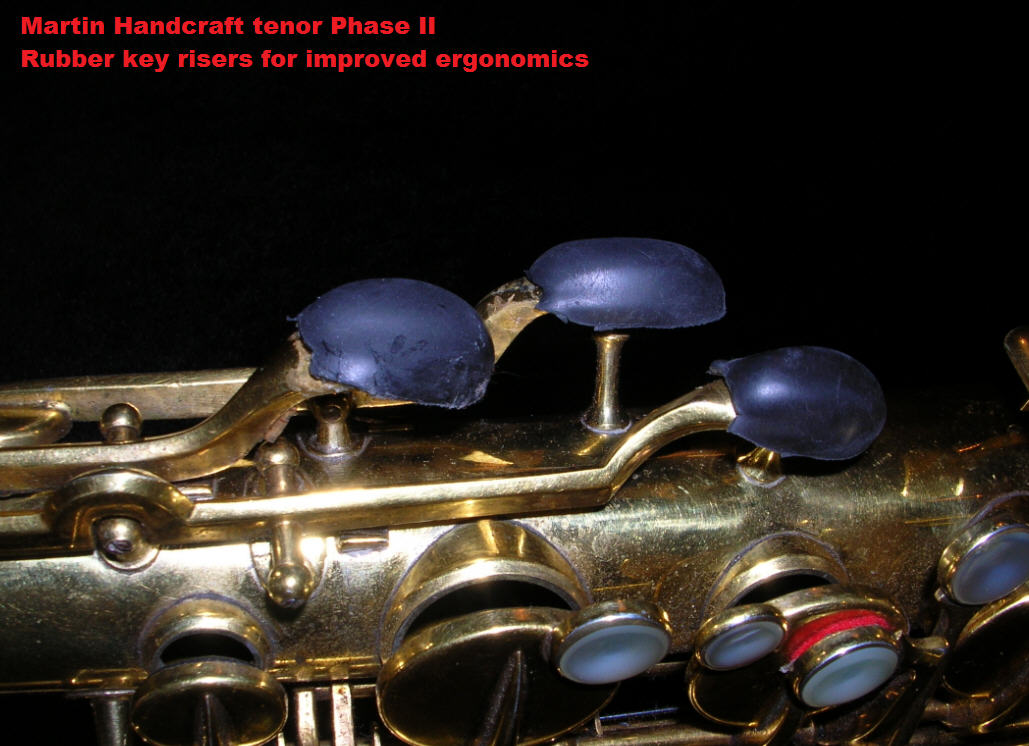
Other producs are available and
some have even made it a business making
ergonomic modificaion to vintage saxophones like Martin Mods.
Links for some
ergonomic modifications to saxophones :